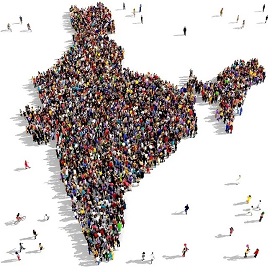India’s population projection: Boon or bane
SUBHASHIS MITTRA- Wide Angle
The world population reached the eight-billion mark on November 15. But this milestone, quite understandably, has been met with mixed feelings. The unprecedented growth has been attributed to a longer average lifespan, better and more accessible healthcare and nutrition, and high fertility rates in some countries.
While this is the highest number of humans to have ever existed simultaneously on Planet Earth, it is also true that, after the peak in the early 1960s, the population growth rate decelerated significantly - it currently stands at less than one per cent per year. The UN projects that the world population will peak at 10.4 billion in the 2080s, and remain largely stagnant around that number till 2100.
India is projected to surpass China as the world's most populous country during 2023, according to the World Population Prospect report 2022. This is a matter of grave concern as India’s population will rise comfortably above the 151-crore mark by 2030 while China hopes to cut the size marginally to 141.6 crore, creating a bigger gap.
Thanks to better education and increased use of contraceptives, India’s total fertility rate, which denotes children per woman, has fallen to 2 during 2019–2021, from 3.4 in 1992–93. The world's population reaching 8 billion people is a sign of human success, but it is also a great risk for our future.
The annual report also notes that the global population is growing at its slowest rate since 1950, having fallen to less than one per cent in 2020. The UN said that figure has come due to longer lifespans and the rapid growth of some nations in Asia and sub-Saharan Africa. The latest projections by the United Nations suggest that the global population could grow to around 8.5 billion in 2030, 9.7 billion in 2050 and 10.4 billion in 2100.
At the same time, with India likely to surpass China as the most populous country in 2023, it should be seen as an opportunity to become the resource creator for the world and focus on ensuring equity as well as caring for the aging populace, experts said.
The Population Foundation of India (PFI) said the milestone should not be seen as a problem but as an opportunity for India to plan better and provide a healthy and happy life for people across the world. "Given the fact that India is projected to become the most populous country in the world in 2023, some sections have been expressing fear that a high population would be a problem for governance.
However, this milestone should be seen as an opportunity to plan better and provide a healthy and happy life for all eight billion of us," the PFI said. Indeed, skilled population is a strength and people should be seen as creators of resources.
Population growth is stabilising across the world. While it took 12 years for the world population to grow from seven to eight billion, it will take approximately 15 years, until 2037, to reach nine billion, suggesting that population growth is slowing down. Global evidence shows that a small portion of the world's people use most of the earth's resources and produce most of its greenhouse gas emissions.
Over the past 25 years, the richest 10 per cent of the global population has been responsible for more than half of all carbon emissions. Countries such as India also need to put in place public measures to address the needs of the growing aging population. These would include attaining universal health care and improving social security systems.
With the world's population crossing eight billion, let us not become knee-jerk and insist that it is the root cause of all our problems nor take the diametrically opposite position that population growth produces no stress, especially at a time when climate threats are exacerbating inequality and loss of livelihood, impacting adversely women and all marginal communities the most.
Today, more than ever before, we need to engage with the population increase from a gender equality perspective and focus on human development and build resilience in every sense of the word. At the same time, the reproductive health and rights of women and girls are key to ensuring societies thrive amid demographic changes.
